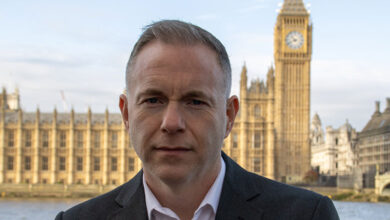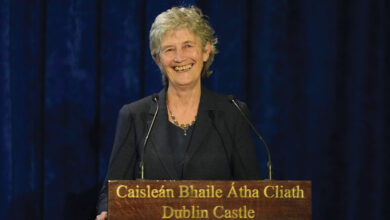Roaming charges abolished
 agendaNi assess the impact of the European Union’s legislation that will bring an end to mobile roaming charges.
agendaNi assess the impact of the European Union’s legislation that will bring an end to mobile roaming charges.
In an attempt to boost growth and innovation across Europe, The European Union has passed into law the scrapping of mobile roaming charges. At present most mobile phone operators charge their customers additional fees to use their mobile phones for calls, texts and data while in a European country other than that of the contracts origin. In Northern Ireland’s border regions this can be particularly troubling.
The vote followed more than two years of negotiations and U-turns as the European Union battled with member states concerned about the financial impact of the legislation on their national telecoms groups. Originally the legislation had been planned to take effect from 15th December 2015 but that was blocked in March by ministers of national governments fearful that telecoms groups would, in the face of this reduction in revenue, hike the price of customers’ domestic tariffs.
At present, operators can charge travellers to European member states up to 14p a minute for outgoing calls, 4p a minute for incoming calls and text messages and 14p per megabyte of data download on top of their normal contract. By April 2016, these costs will be reduced to 4p per minute for outgoing calls, 1p per text and incoming calls per minute and 4p per megabyte of data downloaded.
The abolition of roaming charges will come into full effect in June 2017 and will require reform of the roaming wholesale market on which national phone operators across Europe trade services between each other. It is this trade that allows Northern Ireland’s mobile phone users to make full use of their phone while in European countries such as Portugal, Germany or Greece and sceptics fear that delays in this reformation could further delay the roaming legislation.
Bill shock
In the last year, 25 per cent of UK mobile users travelling to the European Union have faced higher than usual bills for usage upon their return. According to data supplied by Uswitch, this has collectively amounted to £573 million with the average user facing an extra charge of £61 on top of their standard contract charge while 17 per cent of UK users faced bills of £100 or more.
Some mobile operators in the UK already offer their customer roaming charge free access to their phones in Europe whilst others have stuck rigidly to increased charges. These charges can see bills of hundreds of pounds for holidaymakers whose mobile usage would seem normal if they were at home.
Vodafone UK has added daily charges to users’ bills for use of their allowance in European countries while others, including Three mobile UK, have removed roaming charges for those travelling to a number of countries including the Republic of Ireland, France, Italy and Spain. It is estimated that this service has been used by roughly two million customers from the United Kingdom and has saved them £1.3 billion in roaming charges.
Usage debate
 While the move will no doubt prove popular with customers, there is a debate around the impact this will have on the income of mobile operators with some fearing the removal of this lucrative income stream. For others, the move will open up new revenue potential with increased overseas mobile use.
While the move will no doubt prove popular with customers, there is a debate around the impact this will have on the income of mobile operators with some fearing the removal of this lucrative income stream. For others, the move will open up new revenue potential with increased overseas mobile use.
Over the past couple of years, European operators have witnessed the roaming revenues fall following implications of legislation in Brussels but this fall in revenue has simply resulted in the operators turning their attention towards new areas such as machine-to-machine connections and vertical segments. To prevent abuse of the new legislation, roaming providers will be able to apply a fair use policy. This policy would prevent people using roaming services for purposes other than periodic travel.
To counteract the expected two per cent decline in mobile operators’ revenue that the new legislation is expected to herald, safeguards will be introduced to address the recovery of costs by operators. The expected consolidation in the industry will, it is hoped, allow for greater economies of scale for the high costs of building networks capable of handling ever-growing volumes of data.
There is also the fear among some MEPs that this legislation will result in an increase in domestic tariffs. In the days before the vote took place UKIP’s MEP Roger Helmer expressed his concern that “lower prices for jet-setters will mean higher domestic prices” and summed the legislation up as “good for MEPs, bad for voters.”
For citizens of Northern Ireland the legislation is being welcomed as a positive move by Dianne Dodds MEP. Speaking about the legislation, which she has been working on since she was first elected, the MEP described it as a good thing for the people of Northern Ireland, especially those in the border areas.
“This is an issue I have been working on since being elected and I am delighted that colleagues in the European Parliament have voted by an overwhelming majority to scrap EU roaming charges once and for all,” she said. “As we have seen countless times in the media, people are being caught out by huge bills when downloading music or other data during their European holidays, ranging from hundreds to thousands of pounds.
“From 15th June 2017 this will be a thing of the past, with users within the European Union being charged the same as they would in the member state. Furthermore, for those in Northern Ireland who live in border areas with the Irish Republic, the additional costs incurred because mobile networks automatically switch to providers in the Republic will also soon end. In the interim, roaming charges will become cheaper from April next year, when operators will only be able to charge a small additional amount to domestic prices.
“This landmark vote was a long time coming and I welcome the fact that people in Northern Ireland, and indeed millions of people across the EU, will be positively affected by this move.”
Quote: For those in Northern Ireland who live in border areas with the Irish Republic, the additional costs incurred because mobile networks automatically switch to providers in the Republic will also soon end.





